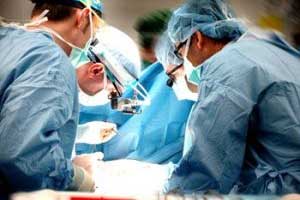- Home
- Editorial
- News
- Practice Guidelines
- Anesthesiology Guidelines
- Cancer Guidelines
- Cardiac Sciences Guidelines
- Critical Care Guidelines
- Dentistry Guidelines
- Dermatology Guidelines
- Diabetes and Endo Guidelines
- Diagnostics Guidelines
- ENT Guidelines
- Featured Practice Guidelines
- Gastroenterology Guidelines
- Geriatrics Guidelines
- Medicine Guidelines
- Nephrology Guidelines
- Neurosciences Guidelines
- Obs and Gynae Guidelines
- Ophthalmology Guidelines
- Orthopaedics Guidelines
- Paediatrics Guidelines
- Psychiatry Guidelines
- Pulmonology Guidelines
- Radiology Guidelines
- Surgery Guidelines
- Urology Guidelines
Pune Surgeons perform innovative endovascular procedure to treat rare carotid aneurysm

Pune: Encountering an extremely rare case of carotid aneurysm doctors at Ruby Hall clinic performed an extraordinary endovascular procedure using a metal stent, starting from the groin of the patient and going upto the base of the skull.
The case was that of a 45-years-old female patient who visited Ruby Hall Clinic with symptoms of swollen neck. On diagnosis, the doctors revealed found it an extremely rare condition of an aneurysm which occurred in the neck in this case.
An aneurysm is a medical condition characterized by bulging or ballooning in the wall of a blood vessel. It is caused when a portion of the artery wall weakens. Like a balloon, as the aneurysm expands, the artery wall grows progressively thinner, increasing the likelihood that the aneurysm will burst. Most commonly seen in the stomach or the chest, this occurrence of the aneurysm in the neck made it indeed rare. An aneurysm in the neck is also known as carotid artery aneurysm.
Swelling in the neck was bothering the lady for a long time. It troubled her even while performing simple tasks such as talking or even swallowing food.
Explaining the case further, her treating surgeon, Dr Dhanesh Kamerkar, Consultant Vascular Surgeon, Ruby Hall Clinic said, “The patient came to us in a rather precarious condition with the carotid aneurysm extended to the base of her skull. We provided the family with two options — an open surgery which entailed a high risk of complications and morbidity or the endovascular route using a stent. Unlike conventional open surgery, an endovascular surgery requires only two small incisions in the area of the groin. Looking at the lower risk of complications, naturally the second option was chosen.”
Symptoms for carotid artery aneurysms include nausea, vomiting or even a stroke. In addition, carotid artery aneurysms are known to form clots that block blood flow to the brain itself. Other symptoms can occur secondary to the pressure of the aneurysm on surrounding structures such as veins and nerves. These symptoms can vary, depending upon what is compressed, but could possibly include facial swelling, hoarseness or difficulty swallowing. In fact, carotid artery aneurysms can rupture, or burst to become a life-threatening situation.
Dr. Rajendra Chavan, Consultant Neurosurgeon, Ruby Hall Clinic added, “Before the surgery we needed to undertake a balloon occlusion test to ensure that the patient wouldn’t suffer from a stroke during the surgery. A small, soft balloon was inserted in the artery wall blocking the blood flow through the specific blood vessel. If the other blood vessels in the neck would have been insufficient in supplying blood to the whole brain, a stroke could have developed. However, the cerebral blood flow was maintained for approximately 17 minutes, and the option for surgery became a possibility.”
Dr. Kamerkar continued, “Inserting catheters through the groin, we used a minimally invasive procedure called coil embolisation wherein the aneurysm was filled with tiny wires that coiled up. We then delivered a stent-graft through the blood vessels to the site of the aneurysm. Blood could now flow through the stent and take the pressure off the aneurysm wall. The one-hour long procedure was successful and the patient was discharged within 3-4 days. She is now well on the road to recovery.”
Aneurysms affect a variety of arteries. The most significant aneurysms affect the arteries supplying the brain and the heart. An aortic aneurysm affects the body's main artery. The risk of an aneurysm developing and rupturing varies between individuals. Smoking and high blood pressure are major risk factors for the development of an aneurysm.

Disclaimer: This site is primarily intended for healthcare professionals. Any content/information on this website does not replace the advice of medical and/or health professionals and should not be construed as medical/diagnostic advice/endorsement or prescription. Use of this site is subject to our terms of use, privacy policy, advertisement policy. © 2020 Minerva Medical Treatment Pvt Ltd